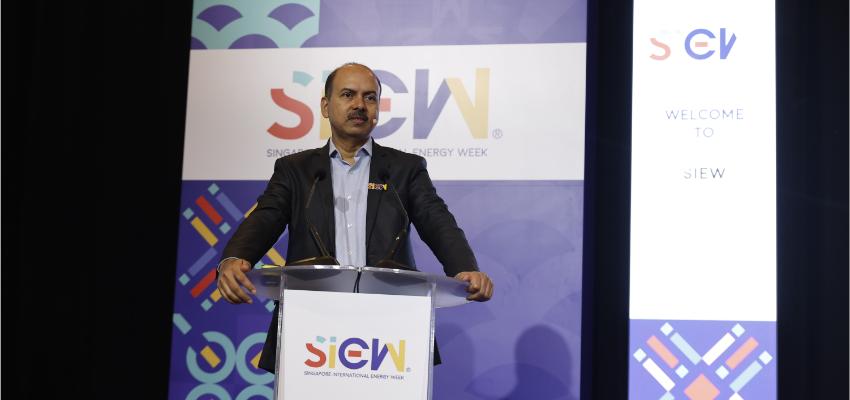The transition towards a clean energy future requires significant shifts in our power system. Samson Shih reports.

In a thought-provoking presentation, speaker Akilur Rahman, Market Innovation Lead - South Asia & Chief Technology Officer - India, Hitachi Energy, emphasised that transiting from traditional power grids to the future necessitates significant shifts: "No transition without transmission."
The emergence of alternative energy sources, such as solar, wind, and electric vehicles, alongside escalating energy demand, compels us to rethink and transform our power grid systems. This comment was made at the SIEW TechTable on Grid Technologies and Digitalisation – Co-Innovating for a Sustainable Energy Future, on 25 October.
Mr Rahman also delved into the multifaceted aspects and challenges surrounding the current grid. While not designed to support such shifts, he said both public and private sectors face an urgent need to accelerate the deployment of infrastructure capable of transmitting new energy sources and loads.
Power electronics: a game-changer
As we brace ourselves for a power grid that is able to adapt and embrace different types of emerging technologies and energy sources, it becomes more evident that we need grid technologies that can tackle the dual challenge of navigating system complexities while ensuring stability. Power electronics, he believes, may be the game-changing technology on this transformative path.
Additionally, the rise of High Voltage Direct Current (HVDC) technology becomes increasingly crucial for transporting green electricity from regions abundant in renewables to energy-hungry centres. Today, HVDC is increasingly deployed at high power levels in demanding conditions, such as undersea, across deserts, and in elevated terrains. Furthermore, the future holds the promise of meshed HVDC technology.
Digitalisation as a key enabler
Digitalisation emerges as a key enabler, designed to tackle the growing complexities of the power system. In an era marked by the influx of energy data from diverse sources, data security plays a major role in ensuring the continued resilience and reliability of the power system.
Databases derived from equipment and smart meters will necessitate timely processing to provide insights that support operations. Here, Digital Twin technology can be a key tool to seamlessly manage these data and facilitate energy planning in dynamic operating conditions.
The importance of partnership and collaboration
Mr Rahman emphasised the need to "find common ground where countries can start collaborating, exchanging ideas and exchanging knowledge". Collaboration is essential, spanning academia, governments, industry, prosumers, and infrastructure players. Their combined efforts will be vital in implementing grid-related changes without disrupting power supply.
The work ahead, he noted, ranges from planning renewable energy projects with grid upgrade timelines to ensuring the availability of funds and preparing the workforce of the future.
Leveraging grid technologies to fuel the energy transition
The energy transition is a collective aspiration towards a cleaner, greener future. Today, a wide array of power electronics-based grid technologies stands ready to address some of the challenges ahead.
However, as Mr Rahman articulated, continued collaboration and partnerships are essential for evolving solutions to meet the diverse challenges that the future presents. As the power system becomes increasingly complex and unpredictable, adopting a dynamic planning and operational philosophy supported by digital technologies will be key to ensuring a stable, reliable and sustainable power system.